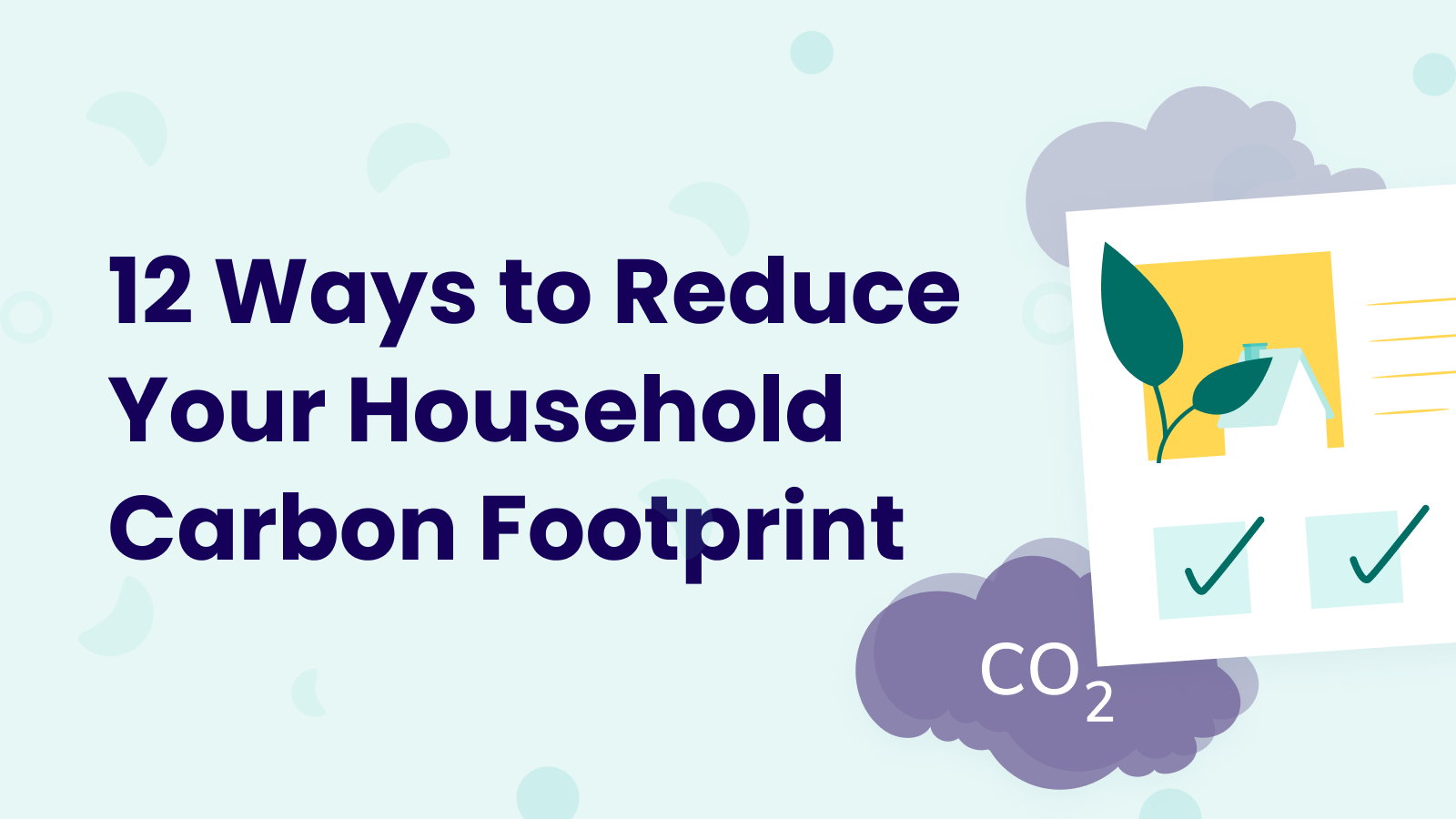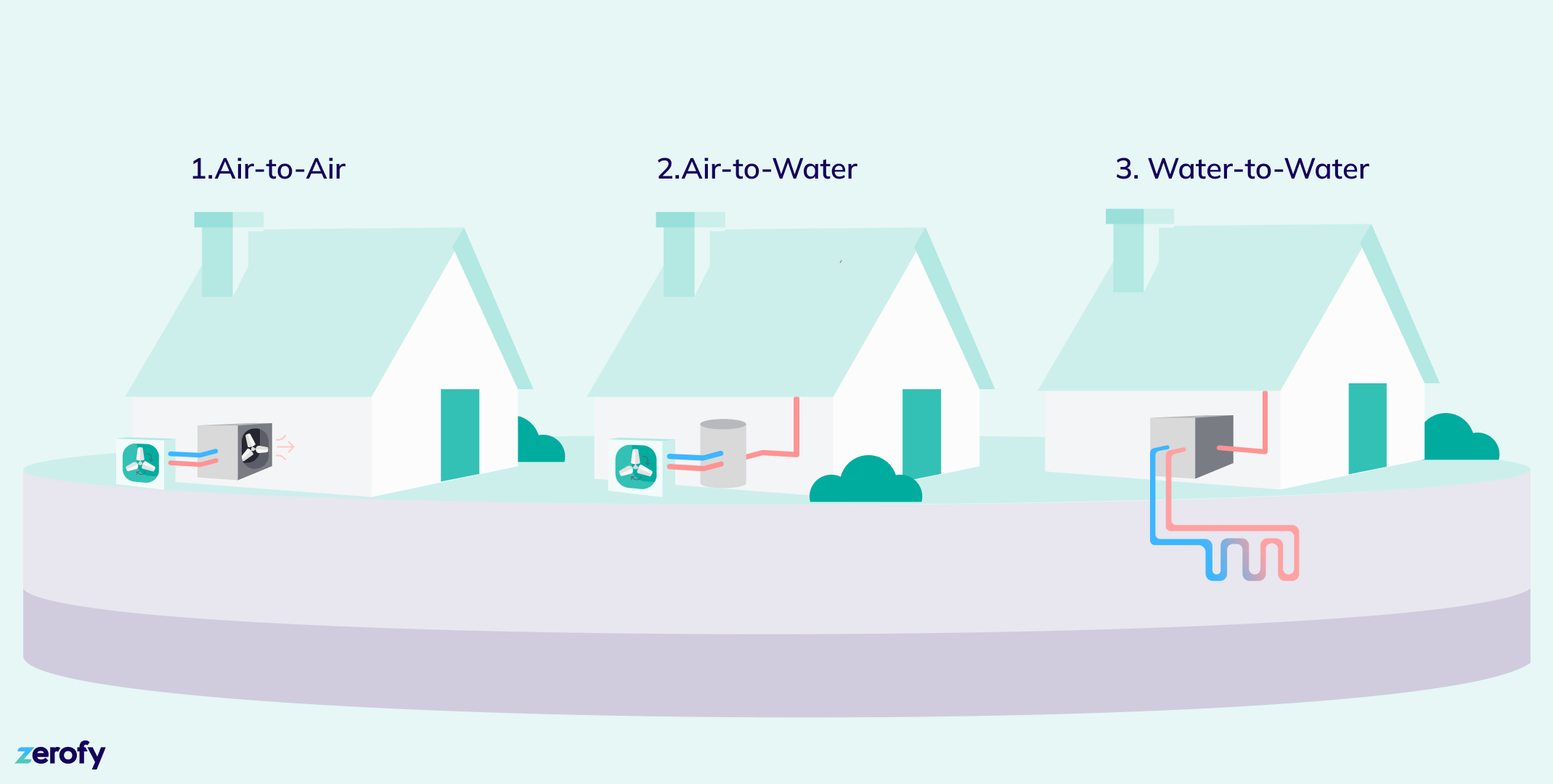12 Ways to Reduce Your Household Carbon Footprint
You may have heard the term carbon footprint used before to describe the amount of carbon dioxide (CO2) emitted from the consumption of fossil fuels by an individual. So, what about the household carbon footprint? This is the CO2 emissions produced by everyone living in a single household, and importantly, it encompasses shared resources that can often be left out by the individual carbon footprint calculation.
At Zerofy, we believe the household carbon footprint is the more relevant unit for estimating emissions because it is more holistic than the individual approach. And, since 70% of total global greenhouse gas emissions can be indirectly attributed to households, there is a lot of potential to take action, right at home.

There are four main emissions sources for households: food, transportation, goods and services, and home heating and energy. In the EU, the average household has a carbon footprint of approximately 10 tons CO2e per year. In the US, the average household has a carbon footprint 2-3 times greater. Data also shows that households with a higher income also tend to have greater household carbon footprints.
How can I reduce my household carbon footprint?
There are many important and high-impact levers within the household that can be used to reduce carbon footprints. Below, we’ve provided effective and measurable recommendations, broken down into the four main categories of household CO2 emissions.
Household heating and energy
1. Produce solar energy
If you have rooftop or balcony space and access to sufficient sunlight, installing rooftop solar is a fantastic way to cut down your household CO2 emissions. By having your own solar panels, you will be able to power some or all of your electricity needs with solar energy, and save on utility bills. There are many great resources online for beginning the process of getting rooftop solar panels, but a good place to start is to understand how much electricity your household consumes. Then you will be able to accurately decide how many panels you need. The Zerofy app can help you measure this so you can get a more clear picture of your electricity consumption.
2. Switch to green electricity
Many utility companies offer green electricity plans. By calling your provider and switching to their green electricity plan, you can easily reduce your household carbon footprint. This means a percentage of the electricity powering your household will be coming from renewables. While switching to one of these plans is not as effective as installing rooftop solar, when many people choose green plans, it can have a powerful effect. When there is increased demand for green plans, utility companies will be further incentivized to buy and build more renewable capacity.
3. Use LED light bulbs
Switching to LED lightbulbs is an easy household swap that can save you a substantial 80% of electricity compared to traditional light bulbs. In the EU, as of 2020, the existing lighting regulations are expected to bring electricity savings of 93TWh/year. This is more than the energy consumption of the entire country of Croatia, and will avoid 35 million tonnes of CO2 emissions annually. In addition to their energy efficiency, LED light bulbs have a long life span, with one source putting them at 40 times the life expectancy of an incandescent bulb.
4. Install a heat pump
Heat pumps are a kind of home heating and cooling system that are powered by electricity and transfer heat using refrigerants. In colder weather, they can heat your home by pulling heat from the outdoors and transferring it indoors. In hotter weather, they can cool your home, by pulling heat out of the air in your home and moving it outside. If you are currently heating or cooling your home using systems that produce fossil fuels, like a furnace, swapping them for a heat pump is a great way to reduce household emissions. There are a few different kinds of heat pump types, and you’ll want to consider your climate, installation budget, and heating or cooling needs when choosing. Learn more here.

Household food choices
5. Eat less beef
The kinds of food we choose to consume can have a significant impact on the carbon footprint of our household. Cattle are the top agricultural source of greenhouse gas emissions globally.
If you regularly consume beef on a frequent basis, consider cutting back to just one day a week. At Zerofy, we are big proponents of doing our best and making swaps that feel attainable—you don’t have to stop eating beef, but just replace it some of the time with less carbon intensive food choices. You can try out some common and delicious plant-based substitutes for beef in your favourite recipes (and even better if your substitutions are in season).
6. Reduce food waste
Food waste is a critical global problem. In the EU alone, 57 million tonnes of food waste is generated each year, with an estimated 10% of all food bought being thrown away. When food is thrown away, it ends up in landfills. When this waste rots in landfills, it produces methane, an extremely potent greenhouse gas. Additionally, emissions were produced in the production and transportation of that wasted food—for nothing. Your household can take action in reducing food waste by following a few tips:
- Make a list of several meals you want to cook over the week, allowing room for leftovers or eating out
- Go to the grocery store with a list, and stick to it
- Take advantage of recipes that can use up lots of leftover vegetables: sheet pan roast veggies, frittatas, soups, or stews
- If you can, compost your food scraps: when done properly, composting has a range of environmental benefits, including minimal greenhouse gas production
Measure your household CO2 footprint,
and begin reducing emissions
Consumption
7. Make sustainable clothing choices
Buying items from fast fashion companies may seem harmless, but those quick, mass produced clothes are a huge source of global emissions. You may be surprised to find out the fashion industry actually outranks air travel in terms of industrial pollution. Fashion accounts for a whopping 1.2 billion tonnes of CO2 emissions globally every year. You can continue to enjoy clothing and fashion and reduce your emissions associated with consumption of fashion related goods by making some of the below swaps:
- When you have an event that will require an outfit you might not wear again or on a regular basis (think wedding or black-tie work event), shop vintage or borrow something from a friend
- Choose sustainable clothing brands that provide transparency on how their items are made—while it may seem like more of an up front cost to buy these kinds of products, good quality has a longer life span
- Consider the 30 wears test before you buy something: can you see yourself wearing this a minimum of 30 times? If not, it is likely not a sustainable choice.
- Repair your clothing, or if you aren’t into sewing, locate a good tailor in your area to extend the life of your well loved clothing items.
8. Buy less
Being more thoughtful about how much we purchase doesn’t have to feel laborious. It can just be a quick mental habit you implement before purchasing anything. Do I already have something like this at home? Could I borrow it from a friend or neighbour instead? Is this something I need, or just something I want? One method that can help is having a “wants” list on your phone. Anytime you want to buy something, if it isn’t a “need”, add it to this list. Take a few days to think about it, and then go back and see if you still want to buy it, or if it was just an emotional impulse that has now faded.
Also, apps like Zerofy that let you connect your cards and then automatically show you the associated CO2 emissions from the goods and services you consume can help you make more mindful decisions about what to buy.
Transportation
9. Switch to an electric vehicle
If it is in your budget, purchasing an electric vehicle is one of the most effective ways you can reduce your household’s carbon footprint. When the car is operating, there will be no tailpipe emissions like in an internal combustion engine (ICE) vehicle. If you live in a region where the majority of the electricity generated is clean, then you will be reducing your emissions by driving an EV over an internal combustion engine vehicle. According to Carbon Brief, in the UK in 2019, the emissions produced per kilometer by a Nissan Leaf EV in its lifetime were three times lower than for an ICE vehicle, even prior to considering the falling carbon intensity of electricity over the years.
10. If you do have an electric vehicle, charge it when grid carbon intensity is low
Carbon intensity is the grams of carbon dioxide (CO2) resulting from one unit of electricity, measured in kilowatt hours (kWh). The makeup of the electricity in your grid comes from a variety of sources, some more green than others. This means that depending on how electricity is generated, the carbon intensity of electricity you use in your home can vary significantly. If you know when the carbon intensity of your electricity is low, you can perform more energy-intensive activities—like charging your EV—during this time. This will allow you to reduce the emissions of those activities, and also save money. Learn more about how the Zerofy app can help with this here.
11. Walk or bike when possible to avoid short car trips
Although it can be tempting for its convenience, driving an ICE vehicle for short trips is particularly detrimental from an emissions perspective. This is not only because these trips can easily be avoided, but also because a cold engine actually emits more CO2 than a warmed up one. This matters because fuel consumption can be twice as high as the car’s average consumption for the first kilometers after starting an engine.
A few tips can help you avoid short car trips without feeling much friction:
- Make it fun: challenge those in your household to see who can get the most steps or kilometers cycled each month
- Think ahead a little bit so you can bundle certain errands together, decreasing the amount of short trips you need to take. Or, plan your time so that you have a little bit extra to walk or bike there.
- Use short walking trips as an excuse to enjoy a podcast or call a friend
- Invest in an electric-bike (see below)
12. Invest in an electric-bike
An electric bike, or e-bike, looks a lot like a regular bike, except that it comes equipped with a motor that typically sits on the center frame of the bike or on one of the hubs. This motor can assist you when you are pedaling. The amount of power delivered by the e-bike motor is based on how much effort you are applying to the pedals, plus the degree of assistance you have chosen. They generally have 3-5 different degrees of assistance, so you can choose based on where you are going, your level of fitness, and how you feel that day. And, you can charge the battery at home. If you typically drive to work in an ICE vehicle, switching to an e-bike, even for a few days a week, can be a healthy way to reduce your household carbon footprint. If you’re looking for a great commuter e-bike for your trip to work, take a look at our recommendations.